
Guest blogged by Harleen Kaur

 Sangat: a concept that has been emphasized to me, and thus I have reiterated to others, for as long as I can remember. My mom telling me to be aware of the friends I was keeping at school, my camp counselors telling me that I should strive for sadh sangat, or people who will push me to be better in every moment.
Sangat: a concept that has been emphasized to me, and thus I have reiterated to others, for as long as I can remember. My mom telling me to be aware of the friends I was keeping at school, my camp counselors telling me that I should strive for sadh sangat, or people who will push me to be better in every moment.
As a young Sikh girl growing up in Wisconsin, sangat was something that was redefined for me every day. Although I found it in my peers on my softball team to my friends in the school musical, the sangat I truly desired was the one I found at gurdwara and at the local Sikh youth camp. With such a small Sikh community in Wisconsin, however, it was not something that was easily found. Sangat came in moments few and far between, and it was often something that I desired more than what I received.
Guest blogged by Shahe Kaur
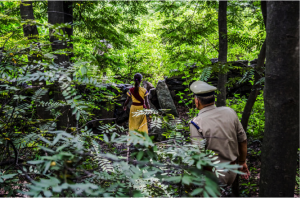
(Photo courtesy of Daniel Berehulak for The New York Times)
The story is not a scene from a movie or excerpt from a novel; it is the living nightmare of a 13-year-old rape survivor in Swang Gulgulia Dhoura, India. In a remote village in the woods, in the middle of the night, an intruder assaulted Devi while she sleeps in her hut. Startled by the stranger’s presence, Devi screamed and Harendra, the intruder, escaped. When Devi’s husband complained of the incident to the Panchayat (village elder), the Panchayat decreed that the punishment for Harendra’s crime would be that his sister, a 13-year-old girl, be raped by Devi’s husband, Pasi. According to the Panchayat, only then would justice be served for Devi.  In this case, the Panchayat happened to be the father of Devi, so his impartiality in commanding his son-in-law, Pasi, to carry out his sentence wreaks more of revenge than justice.
Nonetheless, Devi went into the 13-year-old’s hut and dragged her out by her hair, in the middle of the afternoon, and then passed her on to Pasi. Spectators stood by silently as the 13-year-old cried out for help as she was dragged into the jungle where the Panchayat’s sentence was carried out.  “The girl limped back to her family’s hut 45 minutes later, and then set out on the hour long walk to the nearest police station.â€Â In an act of great courage, the 13-year-old girl filed a complaint at the local police station. In these cases, survivors of sexual assault rarely file complaints and pursue legal action because perpetrators are rarely brought to justice. Those survivors that do seek justice risk bringing “besti†(dishonor) upon themselves and their families, sometimes risking greater consequences of further abuse.
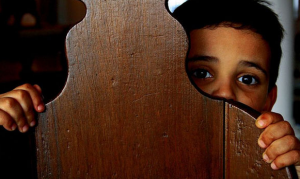 Guestblogged by Daler Singh
Guestblogged by Daler Singh
Warning: This post contains graphic depictions of sexualized violence.
I was about 7 years old when a respected granthi and my dad’s friend sexually molested me. I would spend much of my afternoons and evenings at the gurdwara. My father is a devout Sikh and made sure he went at least once a day after work to visit, but Sundays were the days I remember my entire day could be spent at our local Gurdwara.  One evening, while divan was occurring, I went to go play hide-and-seek with my friends. During one of these games, I ran past a van that was parked on the premises of the gurdwara. It was brown and I remember there were curtains in the van. The door slid open and a young boy, a little older than me, climbed out. He immediately called over to me and asked me to come look inside the van, so I did.
Guestblogged by Jagga Singh.
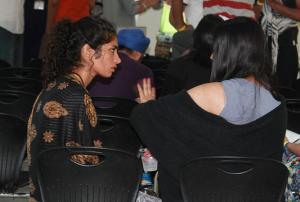 It was a hot June day, and I was stuck in traffic. This was the last place I wanted to be today. As the cars in front of me inched little by little, I imagined myself in my frigid air conditioned room reading a book or watching Netflix. Instead I was sweltering in the heat of my run down car slowly making my way across northern New Jersey so I could live in the woods for a weekend. When a friend I met at a book club told me about Lalkaar, a Sikh camp run by a progressive Sikh organization, I was excited to learn more about it and check it out. But at that moment in my car, I wish I had stayed behind.
It was a hot June day, and I was stuck in traffic. This was the last place I wanted to be today. As the cars in front of me inched little by little, I imagined myself in my frigid air conditioned room reading a book or watching Netflix. Instead I was sweltering in the heat of my run down car slowly making my way across northern New Jersey so I could live in the woods for a weekend. When a friend I met at a book club told me about Lalkaar, a Sikh camp run by a progressive Sikh organization, I was excited to learn more about it and check it out. But at that moment in my car, I wish I had stayed behind.
It was only a week or so prior that I had finally decided that I wanted to go. Between job hunting and living at home, this summer was turning into a long rut. I wanted something to break the norm, I wanted to immerse myself into something larger than me. Unsure if they would consider my financial situation or the timing of my application, I sent a request in anyway. To my surprise, the folks at the Jakara Movement, the organization that runs the Lalkaar camp, accommodated my needs and were happy to have me attend. I couldn’t say no to that.
We Sikhs are celebrating ‪‎Vaisakhi this week, the 315th birthday of the Khalsa, a body of revolutionaries given the responsibility to tear down tyranny and oppression in all its forms. Hundreds of years ago, Sikhs had an intersectional analysis of oppression, recognizing that all forms of injustice were equally deplorable, whether based on caste, gender, economic class, or religion. Unfortunately today, we don’t always live up to this important ideal as a community as we so often perpetuate one form of subjugation while attempting to challenge another.
The last few days, I have been re-reading a bunch of feminist writing on the ways all forms of oppression are deeply interlocked in preparation for a workshop I am facilitating next weekend. I have long been inspired by women of color and Third World feminism and suddenly realized how related this all is to Vaisakhi — a moment when our ancestors formalized their commitment to Sikhi, to bridging the spiritual and political, to becoming freedom fighters, to initiating the Khalsa.
What follows is a passage from Marilyn Frye’s timeless 1983 essay, “Oppression,” which I find especially compelling when thinking about the necessity of understanding and challenging all forms of domination. This Vaisakhi, I am thinking about how these words connect to our struggle and path as a Sikh community.
The experience of oppressed people is that the living of one’s life is confined and shaped by forces and barriers which are not accidental or occasional and hence avoidable, but are systematically related to each other in such a way as to catch one between and among them and restrict or penalize motion in any direction. It is the experience of being caged in: all avenues, in every direction, are blocked or booby trapped.
Cages. Consider a birdcage. If you look very closely at just one wire in the cage, you cannot see the other wires. If your conception of what is before you is determined by this myopic focus, you could look at that one wire, up and down the length of it, and be unable to see why a bird would not just fly around the wire any time it wanted to go somewhere. Furthermore, even if, one day at a time, you myopically inspected each wire, you still could not see why a bird would have trouble going past the wires to get anywhere. There is no physical property of any one wire, nothing that the closest scrutiny could discover, that will reveal how a bird could be inhibited or harmed by it except in the most accidental way. It is only when you step back, stop looking at the wires one by one, microscopically, and take a macroscopic view of the whole cage, that you can see why the bird does not go anywhere; and then you will see it in a moment. It will require no great subtlety of mental powers. It is perfectly obvious that the bird is surrounded by a network of systematically related barriers, no one of which would be the least hindrance to its flight, but which, by their relations to each other, are as confining as the solid walls of a dungeon.

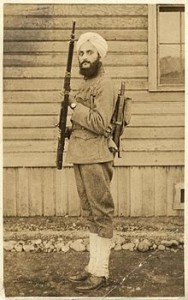 Yesterday, the Washington Post reported that a bipartisan group of 105 Members of Congress sent a letter urging the Department of Defense to end a presumptive ban on devout Sikhs who want to serve in the U.S. Armed Forces.  Over the past several years, civil rights group, The Sikh Coalition, has been working to address the issue of equal opportunity in the Armed Forces allowing all Sikhs to serve.  Since 2009, three Sikh Coalition clients—Major Kamaljeet Singh Kalsi, Captain Tejdeep Singh Rattan, and Corporal Simran Preet Singh Lamba—have received rare and historic accommodations to serve in the U.S. Army with their articles of faith intact.  A timeline of the efforts can be found here.
Yesterday, the Washington Post reported that a bipartisan group of 105 Members of Congress sent a letter urging the Department of Defense to end a presumptive ban on devout Sikhs who want to serve in the U.S. Armed Forces.  Over the past several years, civil rights group, The Sikh Coalition, has been working to address the issue of equal opportunity in the Armed Forces allowing all Sikhs to serve.  Since 2009, three Sikh Coalition clients—Major Kamaljeet Singh Kalsi, Captain Tejdeep Singh Rattan, and Corporal Simran Preet Singh Lamba—have received rare and historic accommodations to serve in the U.S. Army with their articles of faith intact.  A timeline of the efforts can be found here.
The Members wrote:
Dear Secretary Hagel,
We respectfully request that the United States Armed Forces modernize their appearance regulations so that patriotic Sikh Americans can serve the country they love while abiding by their articles of faith.
Devout Sikhs have served in the U.S. Army since World War I, and they are presumptively permitted to serve in the armed forces of Canada, India and the United Kingdom, among others. Notably, the current Chief of Staff of the Indian Army is a turbaned and bearded Sikh, even though Sikhs constitute less than two percent of India’s population. Throughout the world, and now in the U.S. Army, Sikh soldiers are clearly able to maintain their religious commitments while serving capably and honorably.
After hearing from their constituents, many Members of Congress who represent large constituencies of Sikhs signed onto this letter representing the importance and value of political engagement. Â Unfortunately, there were also Members of Congress – some who represent Sikh constituents, who fund-raise within the Sikh community and even sit on the American Sikh Congressional Caucus who did not sign this letter. Â This includes my own Member of Congress, Devin Nunes who “represents” (or that’s what we thought) a large constituency of Sikhs in the Central Valley of California. Â Other missing signatories include Congressman LaMalfa and McClintock – who, in the past, have reached out to the Sikh community for support.
It isn’t enough to simply invite Members to our Gurdwaras and offer them saropay. Â We have to hold our Members of Congress accountable once they leave our Gurdwaras and are challenged to support our issues on the Hill. Â Our presence and political engagement will only make a difference when we continue to take a leadership role to address inequity in our society and establish a strong voice on behalf of the Sikh community.
An unexpected video posted on the Jezebel.com has gone viral in the last 24 hours. The moving clip highlights the  story of 23-year-old Harnaam Kaur from Slough, UK who has a full beard. Harnaam’s polycystic ovary syndrome led to her facial and body hair growth as a pre-teen, resulting in intense bullying and harassment from her peers. Harmaan took amrit as a 16-year-old, proudly embracing her Sikh identity and her unshorn hair — facial hair included.  It seems the teenage Harnaam found the strength to overcome years of isolation and self-loathing in part through Sikhi.
The Best:
-
Bhai Gurbaksh Singh went on a hunger strike for 44 days which led to the release of 4 political prisoners and increased international attention on human rights in India. We were all deeply moved and inspired, and Bhai Sahib sparked a new movement!
-
Sikh women claimed their place in new and outstanding ways!
-
Balpreet Kaur gave this inspiring talk. We all love her.
-
SAFAR held it’s second annual Young Women’s Leadership conference, took us beyond International Women’s Day and shared a beautiful message on the International Day of the Girl.
-
The Sikh Coalition acknowledged International Day of the Girl for the first time.
-
The Sikh Activist Network featured poems about rape in India.
-
Sikhnet hosted an online youth film festival focused on KAUR. How amazing is that?!
-
The Sikh Art & Film Festival added a female speaker to their panel and 18MillionRising stepped in to support gender equality.
-
My awesome friends are building a Dastaar Tutorial Project for women (more details to come soon). Maybe now I can figure out how to keep a patka on my head that doesn’t slip off underneath my dastaar. Win!!!!!
-
-
We marked the one-year anniversary since Oak Creek and grieved several other hate crimes but still came out on top.
-
Piara Singh was attacked in Fresno and the community rose to the occasion in inspiring ways, serving meals and buckets full of compassion to local families.
-
Dr. Prabhjot Singh invited his attackers to worship with him and shifted the narrative of justice when it comes to hate crimes.
-
The Sikh Coalition released a new version of Fly Rights. Rockin it!
-
Jasjeet Singh spoke at the 50th Anniversary of the March on Washington. No big deal.
-
Dr. Kiran Arora began a study on religion and race-related stress among North American Sikhs. Much-needed.
-
Turban Myths was released, the first national public perception assessment on the Sikh American community, conducted by SALDEF in collaboration with Stanford University. Nicely done! (more…)
-
A recent BBC article titled, “Is there a Sikh code of silence on sexual grooming?” discusses how six men were jailed in the UK for offences including child prostitution – the case receiving significant attention since it was the first high-profile case involving a Sikh victim of sexual abuse leading to convictions.  As a follow up to the article, BBC’s Inside Out London showcased a 30 minute report uncovering the “hidden scandal of sexual grooming of young Sikh girls by Muslim men.”  The show is receiving much attention – particularly within the Sikh community – with much discussion around the tense issue, race relations and what’s being done (or not) to address the problem.
The documentary (which you can view below) showcases real cases where girls courageously discuss their experiences being “groomed” and forced into prostitution. Â Sexual abuse is a serious issue within many communities, the Punjabi community is no exception. Â Unfortunately, a lack of openness to talk about the issue often leaves victims and their families living in isolation. Â The report identifies the work of an organization within the UK called the Sikh Awareness Society that provides some assistance to these young girls and often bringing to light the criminal activity which local law enforcement agencies often neglect. Â The organization has committed to traveling to all the Gurdwaras in the UK to provide information about the issue and to help parents understand what their children may be experiencing. Â While it is unclear how large the issue really is or how long it has been occurring – it is nevertheless significant that this discussion is even taking place (especially in Gurdwaras!).
I found the report to be troubling for several more reasons.
 Over the past two years, the Sikh American Legal Defense and Education Fund (SALDEF) has enabled vital training in advocacy, self-empowerment, and community change to over thirty Sikh American youth through SikhLEAD’s Leadership Development Program. Now, with two classes already pioneering their own projects, SALDEF is proud to be gearing up for the third class of rising Sikh leaders.
Over the past two years, the Sikh American Legal Defense and Education Fund (SALDEF) has enabled vital training in advocacy, self-empowerment, and community change to over thirty Sikh American youth through SikhLEAD’s Leadership Development Program. Now, with two classes already pioneering their own projects, SALDEF is proud to be gearing up for the third class of rising Sikh leaders.
The Leadership Development Program brings together approximately 17 young Sikh American leaders from across the country to participate in six days of training spread over Columbus Day and Memorial Day weekends. Attendees will participate in a series of workshops aimed to challenge, inspire and support a group of intelligent and motivated Sikh leaders. The purpose of the program is to empower Sikh American youth to be confident, aware and resourceful individuals, equipped with all the tools they need to not only fulfill their personal potential, but also become change makers within the Sikh American community. For more details please visit www.sikhlead.org.
SALDEF’s SikhLEAD Leadership Development Program will ensure that our youth remain engaged with the issues that affect our community today and will provide them with the resources and skills they need to enact real change in the future.
The deadline to apply for the SikhLEAD LDP is Sunday, August 4, 2013 at 11:59 EST.
Co-blogged by Sundari and The Sikh Love Stories Project
Each year, International Women’s Day is celebrated to honor women’s economic, political and social achievements. As individuals around the world celebrate this day – in both big ways and small – I am left to consider how we can work to honor the achievements of Sikh women not only today but on an ongoing basis.  Sikh women have contributed in such meaningful ways, and yet much of that dialogue is often missing from our history.
In this post, we will be sharing some images with you and discuss various ways Sikh women have been witness to and engaged in our history both locally and globally.  We know this post will not be comprehensive – there is much to unearth about Sikh women’s contributions – but we hope it’s a starting point that will encourage us to keep this valuable history in our minds. Many of the following images each depict a different element of Sikh women in history.
Stories often begin with immigration and this first image shows Sikh women pioneers in Canada who were part of an immigrant labor force recruited in the early years of the twentieth century.
Mill Town Pioneers. Most of Canada’s early Sikh immigrants found work in lumber mills throughout the Pacific Northwest.
Canada’s largest mill community, Fraser Mills in New Westminster, BC, had between 200 and 300 Sikhs living and working there in 1925.
In this photograph from that period, three Sikh women stand in front of company houses at the mill. [link]
One of them wears a traditional embroidered shawl called ‘phulkari’. The phulkari played an important role in the lifecycle rituals of women in Punjabi villages at times of birth, marriage and death.
A goat
A sacrificial lamb
Halal meat
Her blood runs dry at the bottom of a river
Cleansing the land
Peshawar
Punjab
Pakistan
India
Afghanistan
Sri Lanka
The tip of my soul
New Delhi
Amritsar
Anandpur Sahib
Chandigarh
Jalandhar
Ludhiana
My constellation of stars
Drip drip dripping
Blood seeps into earth
One quick slice from the neck
Less painful that way
More fertile that way
Mothers, sisters, daughters
We bury red splashes
Virgin ground
A young Singh in the UK has been in the spotlight the last few days after his appearance on a dating television show called “Take Me Out.” I just heard about it a show on BBC Radio 1 hosted by Nihal, which you can listen to in its entirety here. Nihal speaks with Param, the dating show contestant, and takes comments from listeners, who discuss Param’s appearance on the show and more generally whether turban-wearing Sikh men are discriminated against when it comes to dating and marriage. As you’ll see in the clip below, as soon as Param comes out, 20 of the 30 women turn their lights off, indicating no interest in him. One woman who left her light on said she is interested in him because she could use Param’s turban to store her phone.
I recommend checking out Nihal’s discussion on the BBC especially starting at around 44:00 into the show if you don’t have time to listen to the whole thing. One caller named Jasminder asserts that when Param came down, it became more like a comedy show and less like a dating show given how the women and audience reacted. He continues that turban-wearing men often feel invisible to women, not literally, but “when it comes to actually going out with someone.”
Guest blogged by a Kaur
A note from the author: Thank you Gurlene Kaur for starting the conversation.
ਚà©à¨ªà©ˆ ਚà©à¨ª ਨ ਹੋਵਈ ਜੇ ਲਾਇ ਰਹਾ ਲਿਵ ਤਾਰ ॥
By remaining silent, inner silence is not obtained, even by remaining lovingly absorbed deep within.
1
19 years later
I still hear his cry tugging at my heart
In the middle of the night
Glistening red blood fills my consciousness
I sit up, breathless
My apartment
New York City
I see something familiar
Then drift back to sleep.
2
Sleep still in my eyes
I pull on a purple pajami and wrap myself in a chunni
One by one we pile into the car
Kirtan playing in the background
My 4 year old cousin sits next to me expectantly
Long black curls sneak out from underneath her pink hat
Betraying her age, revealing her true spirit
A kid-sized computer and backpack grace my lap
I follow the lilt of her voice as we pass by field after field.
Disclaimer for non-Sikhs: In writing this, I am not in any way saying Sikhs are somehow more predisposed to violence than any other community. The last thing I want to do is perpetuate racist stereotypes about Sikhs. However, I write because I see an opportunity for introspection in our community. If you choose to continue reading, I encourage you to think about how similar dynamics may play out in your community/ies.
I am still having a hard time wrapping my head around what happened in Newtown, CT last week, especially given the kind of year it has been here in the United States, from Aurora, CO to Oak Creek, WI.
For now, I want to pick up the conversation where Nina left off. Indeed, heartbreak is the right word for how I’m feeling about the deaths of children and adults due to gun violence, including those that don’t make the national news headlines, whether they are youth of color shot by police officers or families in Afghanistan bombed by the U.S. military.
Today, the depth and pervasiveness of violence in American culture is more clear than ever. The evening of the tragedy in Newtown, Michael Moore who made the Oscar-winning film about school shootings in 2002, Bowling for Columbine, stated:
I like to say that I sort of agree with the NRA when they say, ‘Guns don’t kill people, people kill people,’ except I would just modify that a bit and say, ‘Guns don’t kill people, Americans kill people,’ because that’s what we do. We invade countries. We send drones in to kill civilians. We’ve got five wars going on right now where our soldiers are killing people–I mean, five that we know of. We are on the short list of illustrious countries who have the death penalty. We believe it’s OK to kill you when you’ve committed a crime.
 During this past week following the tragic events in Wisconsin, our community has changed substantially. We have grown as a people and identified even more with Sikhi, standing up in a time of crisis, and responding in a positive and effective way, battling apathy with activism and suffering with solidarity.
During this past week following the tragic events in Wisconsin, our community has changed substantially. We have grown as a people and identified even more with Sikhi, standing up in a time of crisis, and responding in a positive and effective way, battling apathy with activism and suffering with solidarity.
SALDEF’s SikhLEAD Leadership Development Program will ensure that our youth remain engaged with the issues that continue to affect our community today and will provide them with the tools they need to enact real change. Although it may be a dark time for many of us, it is now more than ever that we need leaders and young activists leading the struggle against oppression. It is now more than ever that we need the younger generation to step up to the podium and speak out and act against injustice. It’s not enough to feel for our Sikh brothers and sisters anymore. The time is now for the youth to rise up and become leaders, especially in the wake of the Wisconsin shooting tragedy.
The Leadership Development Program brings together approximately 15 young Sikh American leaders from across the country to participate in six days of training spread over Columbus Day and Memorial Day weekends. Attendees will participate in a series of workshops aimed to challenge, inspire and support a group of intelligent and motivated Sikh leaders. The purpose of the program is to empower the Sikh American youth to be confident, aware and resourceful individuals, equipped with all the tools they need to fulfill both their personal potential but also that of the Sikh American community. For more details please visit www.sikhlead.org.
Let us take on the Guru’s seva together and become the pioneers of our own future, a future that has no place for events such as the Wisconsin shootings. The deadline to apply for the SikhLEAD LDP has been extended until August 19, 2012 at 11:59 EST.
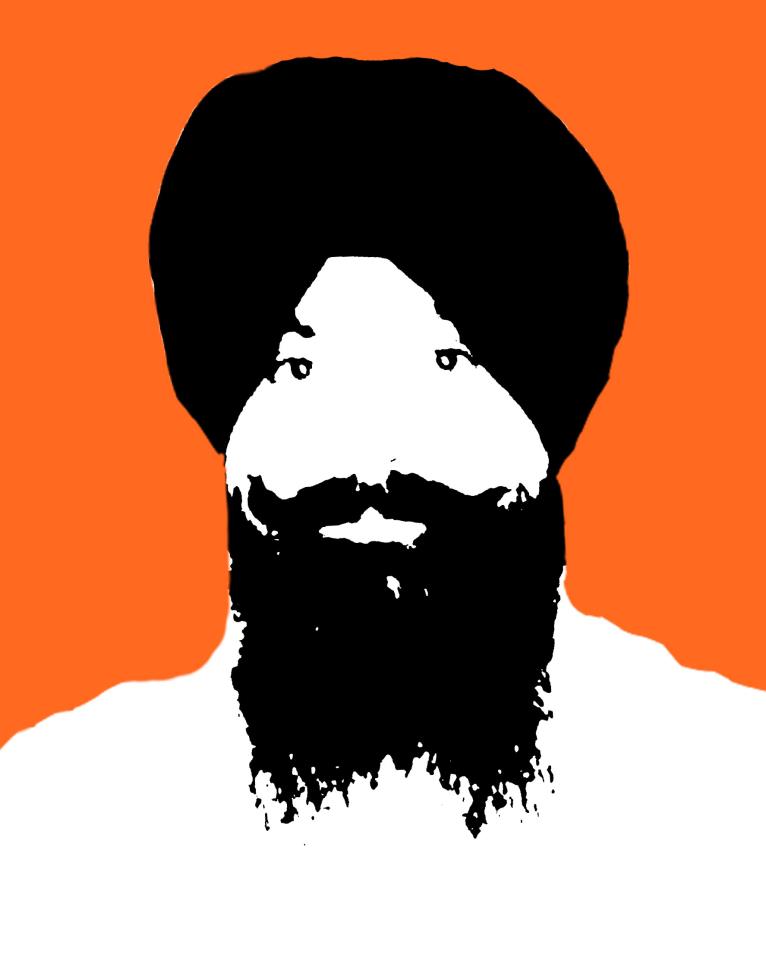 News has started to trickle on this day that Bhai Balwant Singh Rajoana was initially scheduled to be hung. Due to the stay ordered by President Patil of India, there is an indefinite delay.
News has started to trickle on this day that Bhai Balwant Singh Rajoana was initially scheduled to be hung. Due to the stay ordered by President Patil of India, there is an indefinite delay.
On Gurdaspur
News media are reporting the Punjab Police has suspended SSP (Senior Superintendent of Police) of Gurdaspur, Varinder Singh, for the shooting and has registered a case against the DSP (Deputy Superintendent of Police). This has only occurred due to the pressure of the sangat, especially that of Jaspal Singh’s family, who have refused to perform the cremation until the arrest of the Shiv Sainiks and police officials. According to some reports via Facebook (so read with caution) heads of the Sant Samaj coalition along with Jathedar Gurbachan Singh had started a dharna along with Jaspal Singh’s family calling for the police officers that ordered the firing to be punished. Badal was against this action by Gurbachan Singh, but Gurbachan Singh and heads of the Sant Samaj threatened to call for a bandh in Gurdaspur, if action was not taken. Badal then conceded to the request and brought about the orders against some police officers, though I have not heard anything about charges or FIRs against the Shiv Sainiks. If this is true, expect Prakash Badal to REIGN in his appointee – Gurbachan Singh – and for him to better play the role of a puppet. Gurbachan Singh knows who pulls his strings and this act of independence will be punished. Expect more pro-Badal quotes and a calling for an end to all events. We would do well to begin ignoring him.
Other news in Punjab
Members of the Sikh Channel were detained by Punjab Police for four hours. This is a serious blow against freedom of the press. While we are excited that they have been released, we hope that UK Sikhs put full pressure on the UK Foreign Office to reprimand the Indian Government on such matters. When UK journalists were captured in Iraq, Libya, and other war-zones, the Foreign Office helped put pressure for their release. We would expect them to lodge a complaint against Indian officials in this matter as well. If someone from the UK is drafting a letter and would like to share, please send us the link.
I came across this poem today, and definitely wanted to share with all you Langarites. Preeti Kaur, the author from California, is able to speak to numerous aspects of self-identifying as a Punjabi. We’ve had some discussions around Punjabi and Sikh identity here before, thought it would be refreshing to have an artistic take to the topic. Here are a few of my favorite lines:
You Bring Out The Punjabi In Me
By: Preeti Kaur
with respect to Sandra Cisneros’ “You Bring Out the Mexican In Me“
…
sonu
you burn the inquilabi in me
ghadar is a language
i speak only to you
pacific mist we breathe
the subcontinent to freedom
from our san francisco dreams
hidden under guise of fog
tag taxis with saffron orange bumper stickers
ZINDABAAD!!! ZINDABAAD!!!
perhaps the morning pooni the start of our rebellion
radioactive jalebis the danger
we eat
Click here for the audio podcast and full poem published at the online literary magazine Qarrtsiluni.
 The Sikh American Legal Defense and Education Fund (SALDEF) has announced the application for the 2012 SikhLEAD Internship Program. The objective of SikhLEAD is to inspire, train, and support motivated and enterprising young Sikh American leaders as they prepare for a lifetime of community engagement and community leadership.
The Sikh American Legal Defense and Education Fund (SALDEF) has announced the application for the 2012 SikhLEAD Internship Program. The objective of SikhLEAD is to inspire, train, and support motivated and enterprising young Sikh American leaders as they prepare for a lifetime of community engagement and community leadership.
The internship program is aims to put Sikh American college and graduate students, as well as recent grad, in competitive internship in the White House, on Capitol Hill and government agencies. Through this program, students will be afforded first-hand perspective into the functioning of the federal government, as a way of providing experience-based training to individuals interested in civic engagement and government affairs.
Through the experience of interning in a congressional office, interns will:
- explore a potential career track
- create a network of professional and personal contacts
- develop real-world skills
- build confidence and professional work habits
The application deadline for summer 2012 internships is THIS SUNDAY, Feb 26th, 2012!
Visit www.sikhlead.org for more details and to apply. Spread the word and tell your friends about this exciting opportunity.
Here on TLH, we look forward to sharing stories about young Sikhs pursuing their passion.
YouTube, Lenovo, and Space Adventures are running a competition to find an amazing space experiment and 16-year-old Pranav Singh is one of the finalists! If he wins, his experiment will be carried out on the International Space Station and streamed live from space on YouTube.
You can view Pranav’s video below and learn about his experiment here. Don’t forget to VOTE! You can vote each day until January 24th. Pranav is a finalist and has a good chance to have his experiment picked! Remember, he is only 16-years old!
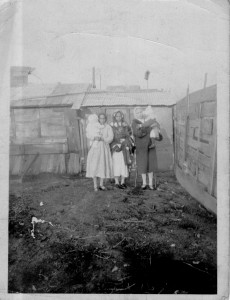 Mill Town Pioneers. Most of Canada’s early Sikh immigrants found work in lumber mills throughout the Pacific Northwest.
Mill Town Pioneers. Most of Canada’s early Sikh immigrants found work in lumber mills throughout the Pacific Northwest.
